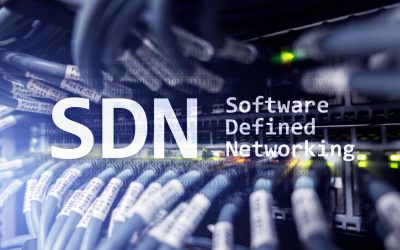Software-defined WAN or SD-WAN is one of the enterprise technology that’s making networking experts go haywire. For the past several decades WAN technology relied on the legacy instruments and defined an architecture to build the network but SD-WAN is a market disruptor. The software-defined networking technology is applied to WAN connections such as mobile network, broadband internet and Multi-protocol label switching (MPLS). Using the software-defined network enterprises can create a network over the wide range of offices separated by the geographical boundaries. Using the software defined-network, enterprises can connect with different corporate offices and even data centers utilizing the internet or cloud-native private network. SD-WAN decouple the network from the management and transfer the traffic management and monitoring functions from the hardware.
It Relies On Four Different Components:
1. WAN virtualization.
2. Edge Connectivity Abstraction
3. Software-defined traffic management.
4. Policy-driven and centralized management.
The Wide Area Network (WAN) that is currently being deployed often uses specialized hardware and the policies are well defined. The demand from the enterprise customers is to have a network that is open, flexible and is cloud-based rather than the expensive hardware has driven technology. SD-WAN can be used to secure the network and improve the efficiency of the WAN. According to the study by the Nemertes currently, the numbers of enterprises that have adopted the SD-WAN around 78 percent of those enterprises are not planning to drop MLPS from their network strategy. SD-WAN’s are moving out from the early adopter’s stage and this will be introducing different technological changes in the market.
Here are Certain Trends that Might Change In SD-WAN for 2019
1. No more on cost-saving
Initially, the SD-WAN wave started with a feature that it would be saving the network cost by slashing the MPLS broadband. If an enterprise decides to replace the complete MLPS network that is being currently being used it could affect the other aspects of the network. Completely shifting the network from hardware-based protocol to the broadband-based network will require an optimization technology to deal with the unpredictability of the network. Enterprises are adopting the Hybrid-network to deal with different requirements but if the aim must not be just cost saving.
2. Focus towards the security
Shifting the network from WAN based on the hub and spoke towards the SD-WAN will mean enabling the local internet breakout. Local Internet can be used to access the enterprise cloud services having a profound impact on the cyber-security of the enterprise. The surfaces of exposure multiply, increasing the input and output source from one to even thousands. If an enterprise is looking to adopt the SD-WAN the security needs to back by special architecture.
3. Managing the SD-WAN Service
Using the Legacy WAN is highly inefficient but still simple. Using the SD-WAN an enterprise will be able to support the agile methodology of the network. Networking experts will have to make several decisions that they never had to face before that includes the local internet connections, path to be selected for the criteria, the level of meshing and the security that needs to deploy. Currently, we don’t see any network that can be used to manage the broadband beyond the geographical regions.
Though the current concerns about the security and applicability to satisfy different security requirements can be weighing down the usage of the SD-WAN. However, as the adoption increases there would be more increase in the number of vendors that would be exploiting the business opportunity. Currently, there are 20 vendors in Gartner’s WAN edge Magic Quadrant that offer SD-WAN. Many larger enterprises that are shifting their focus towards buying smaller enterprises that are developing SD-WAN technology.
To know more, you can download our whitepapers.









































































